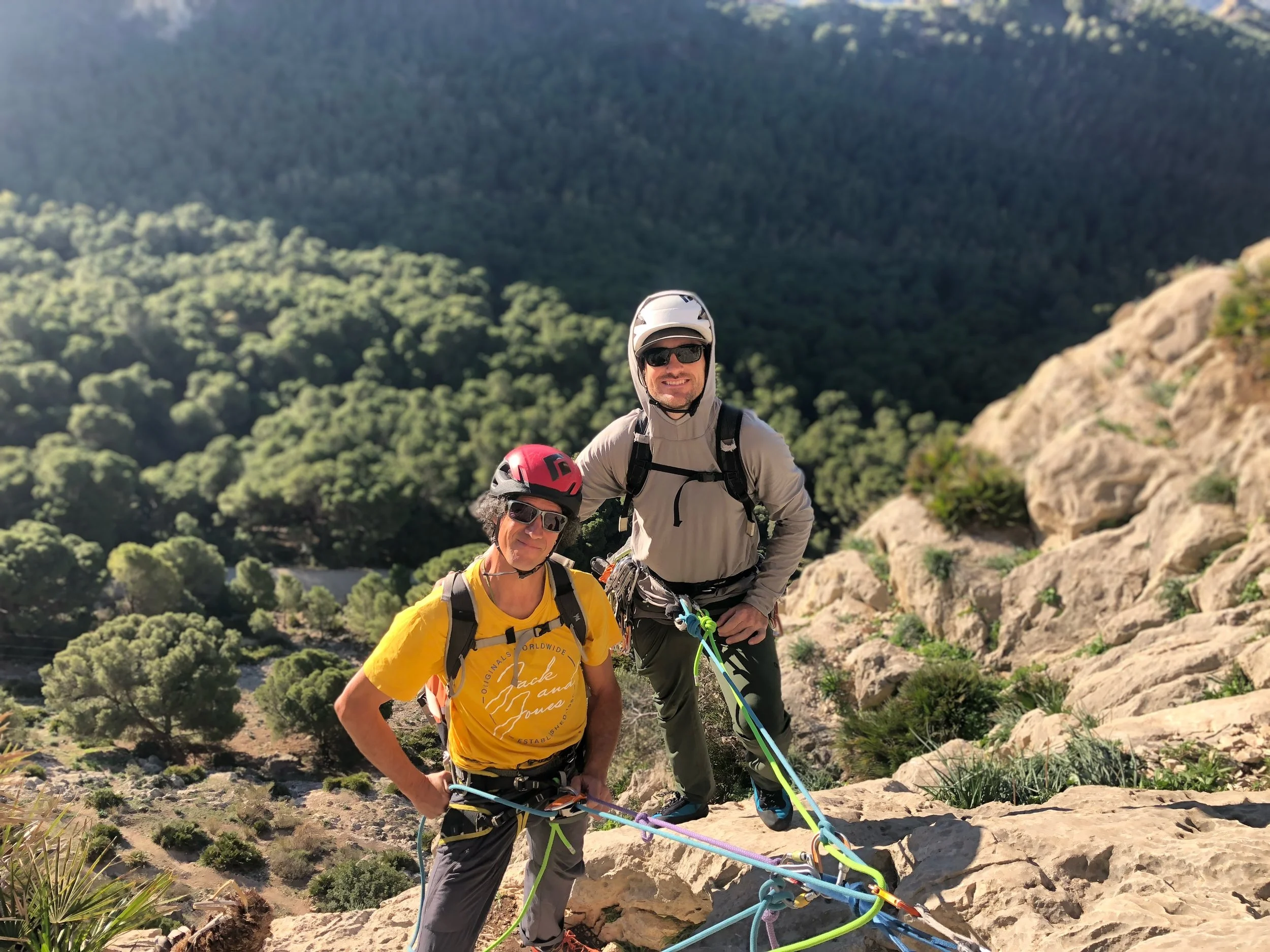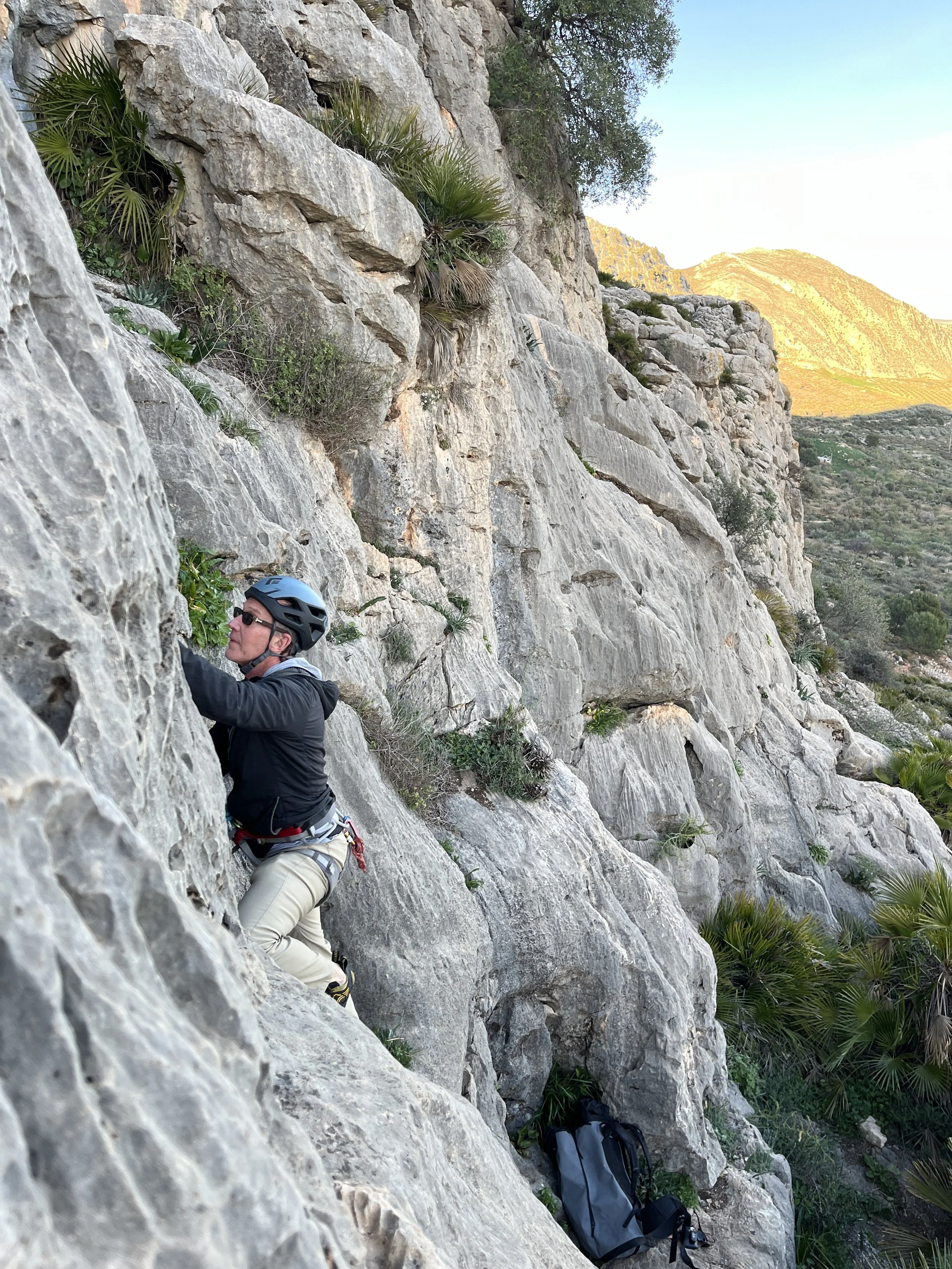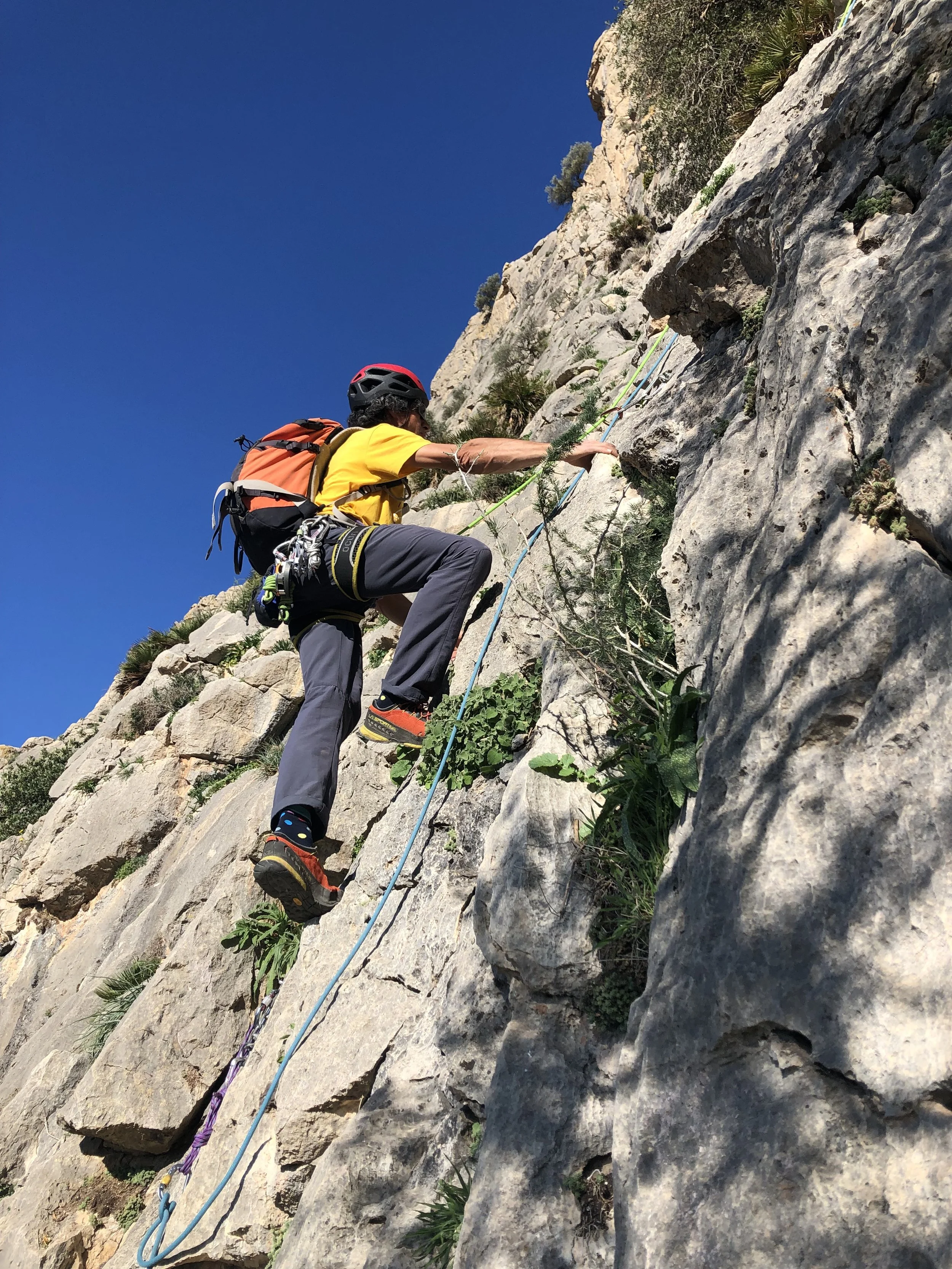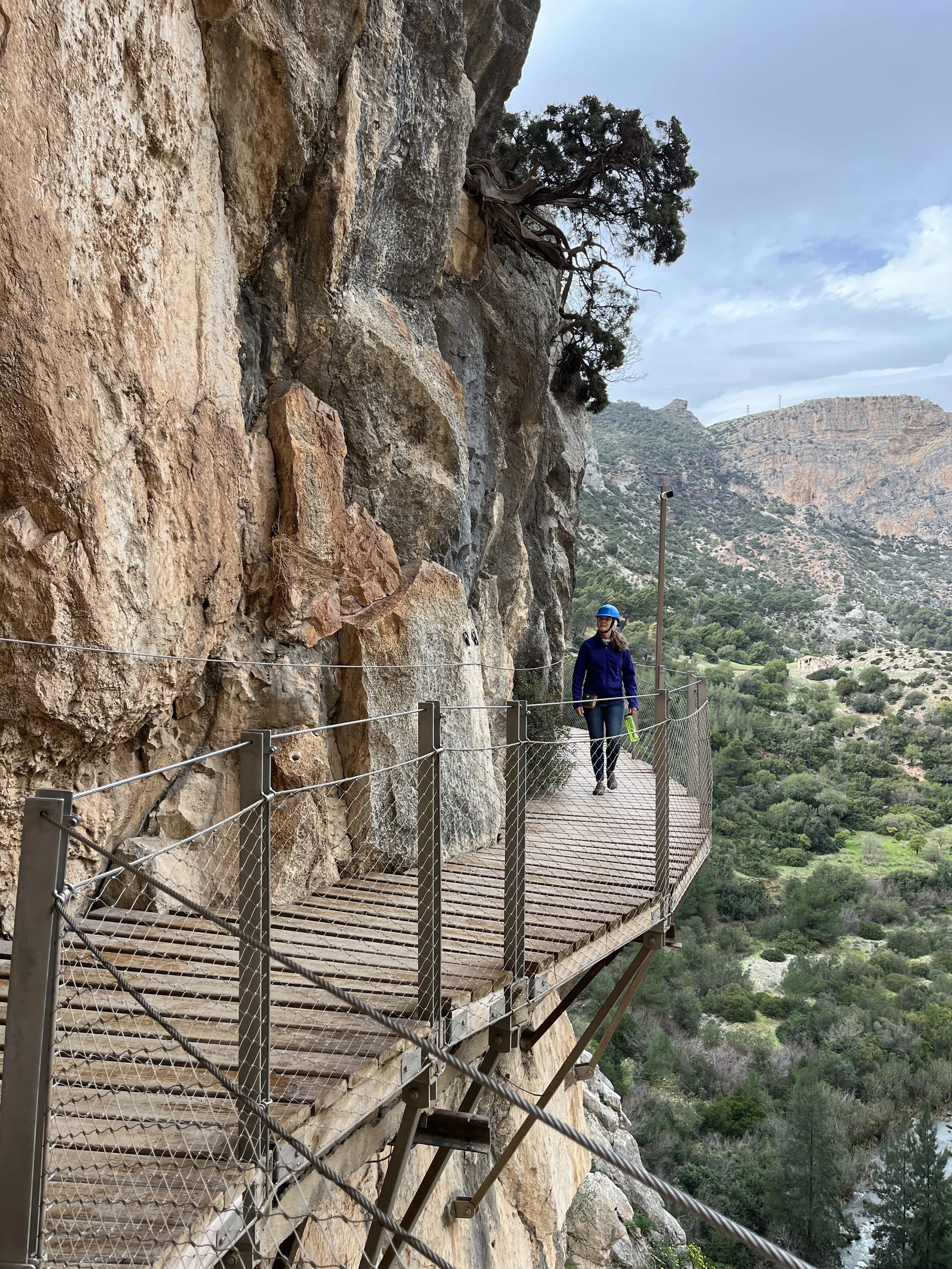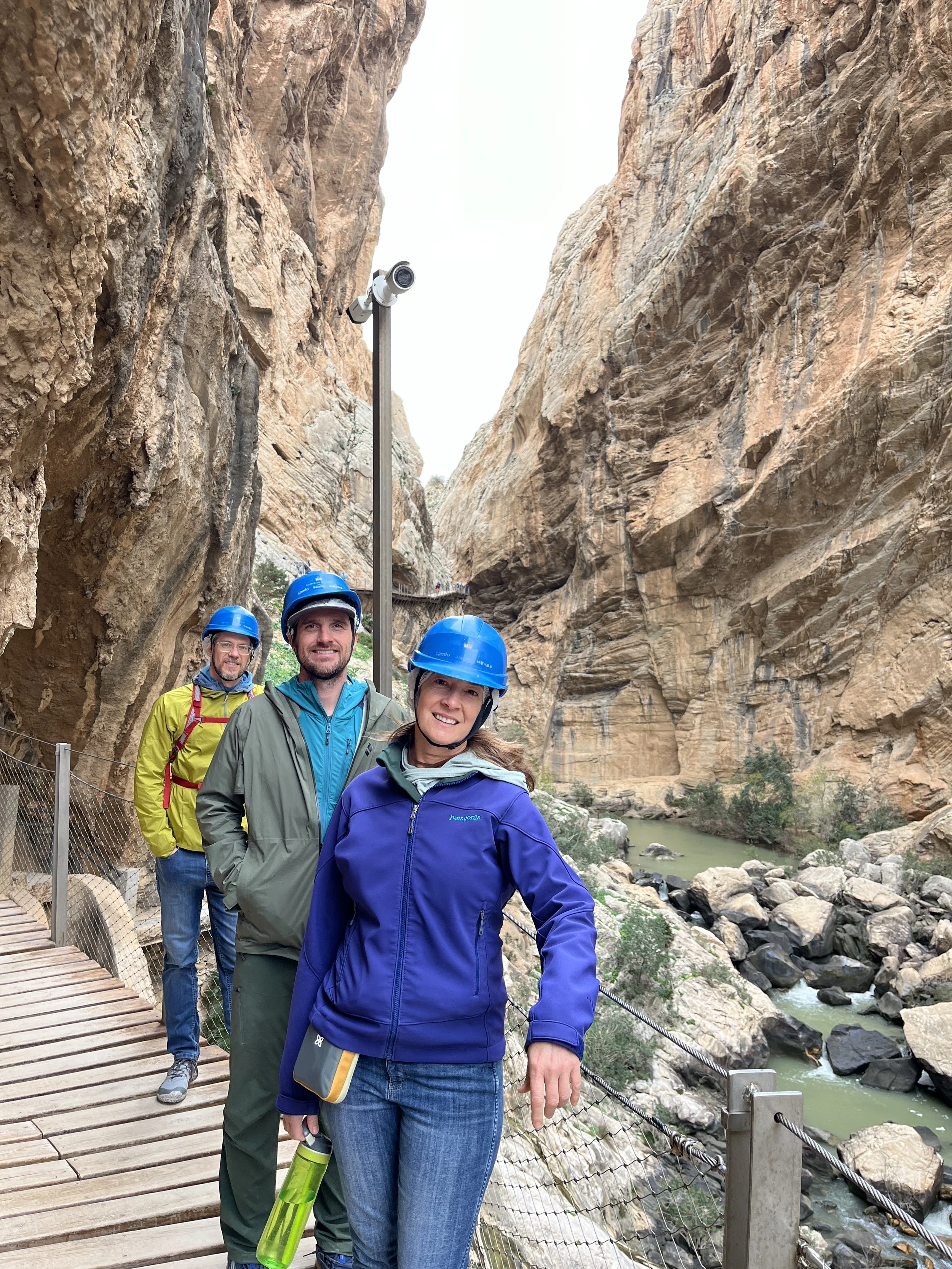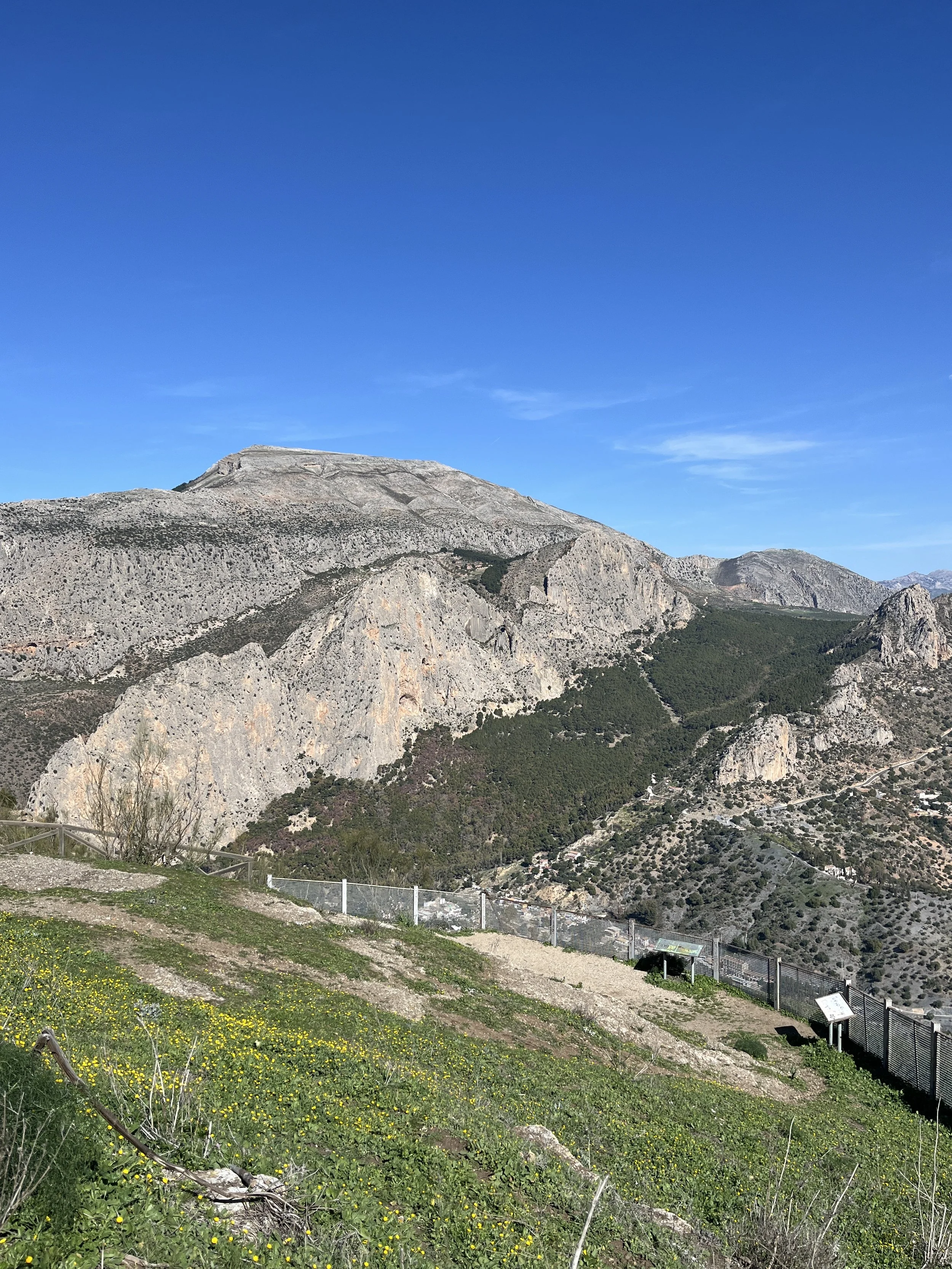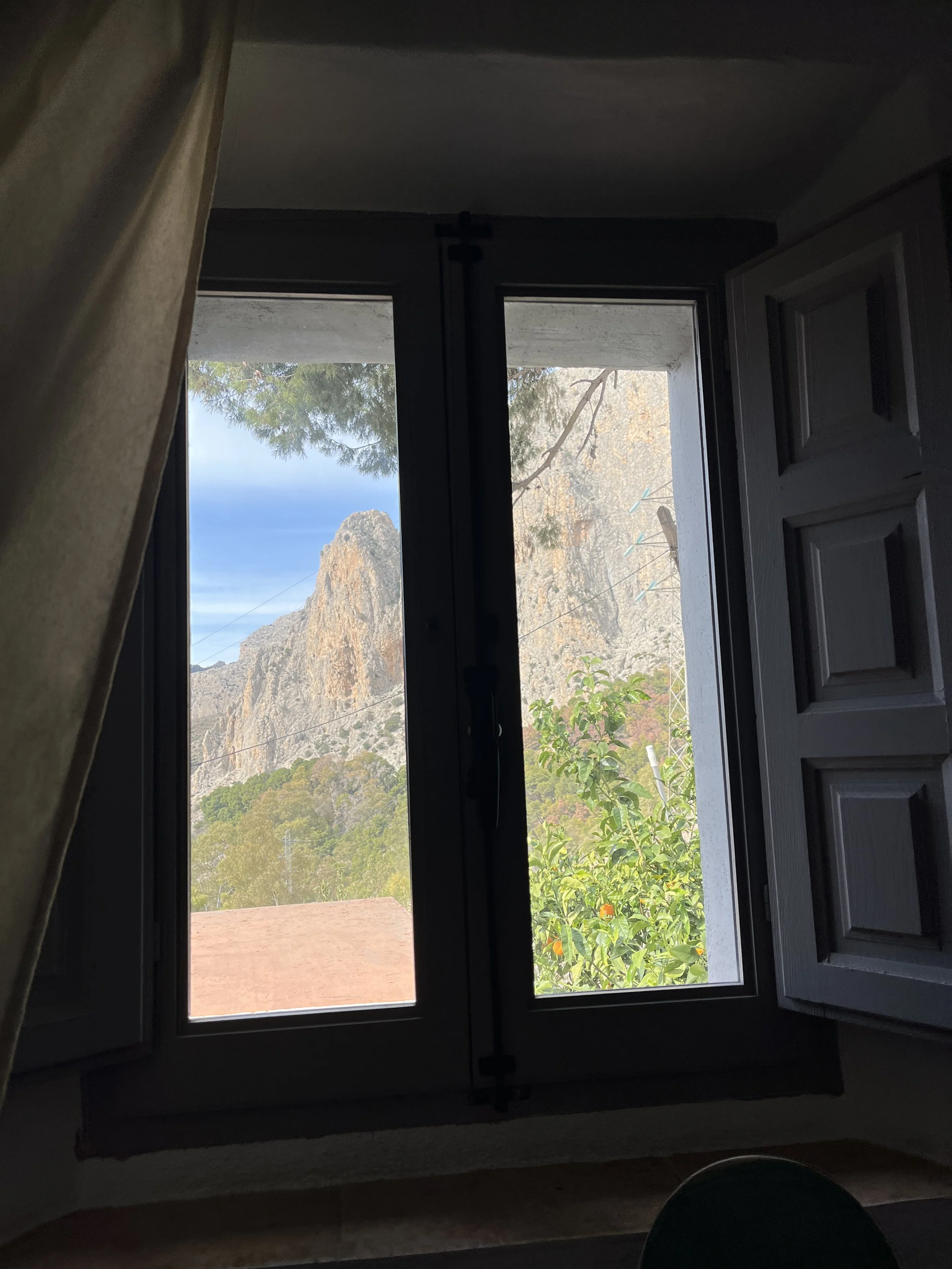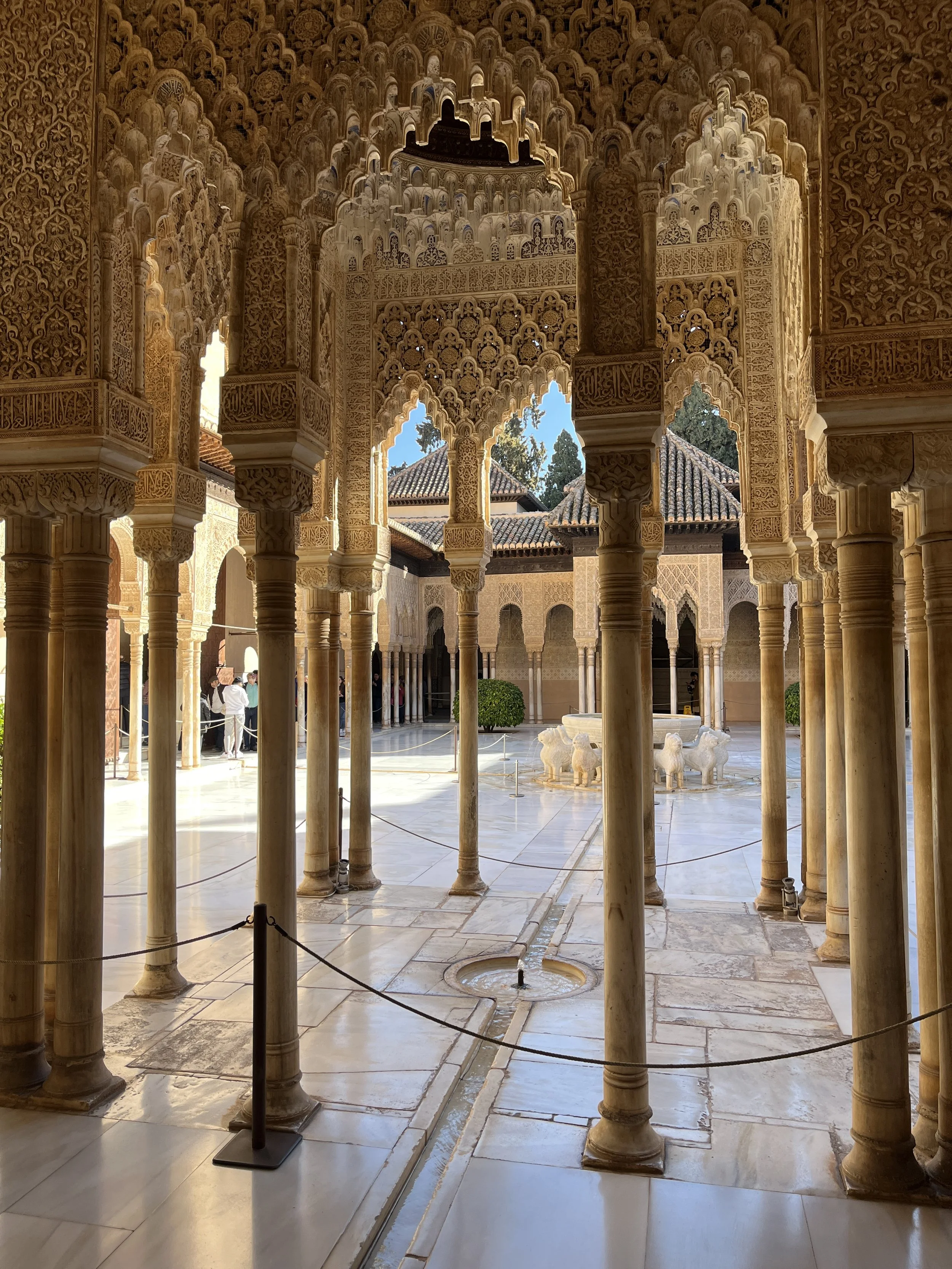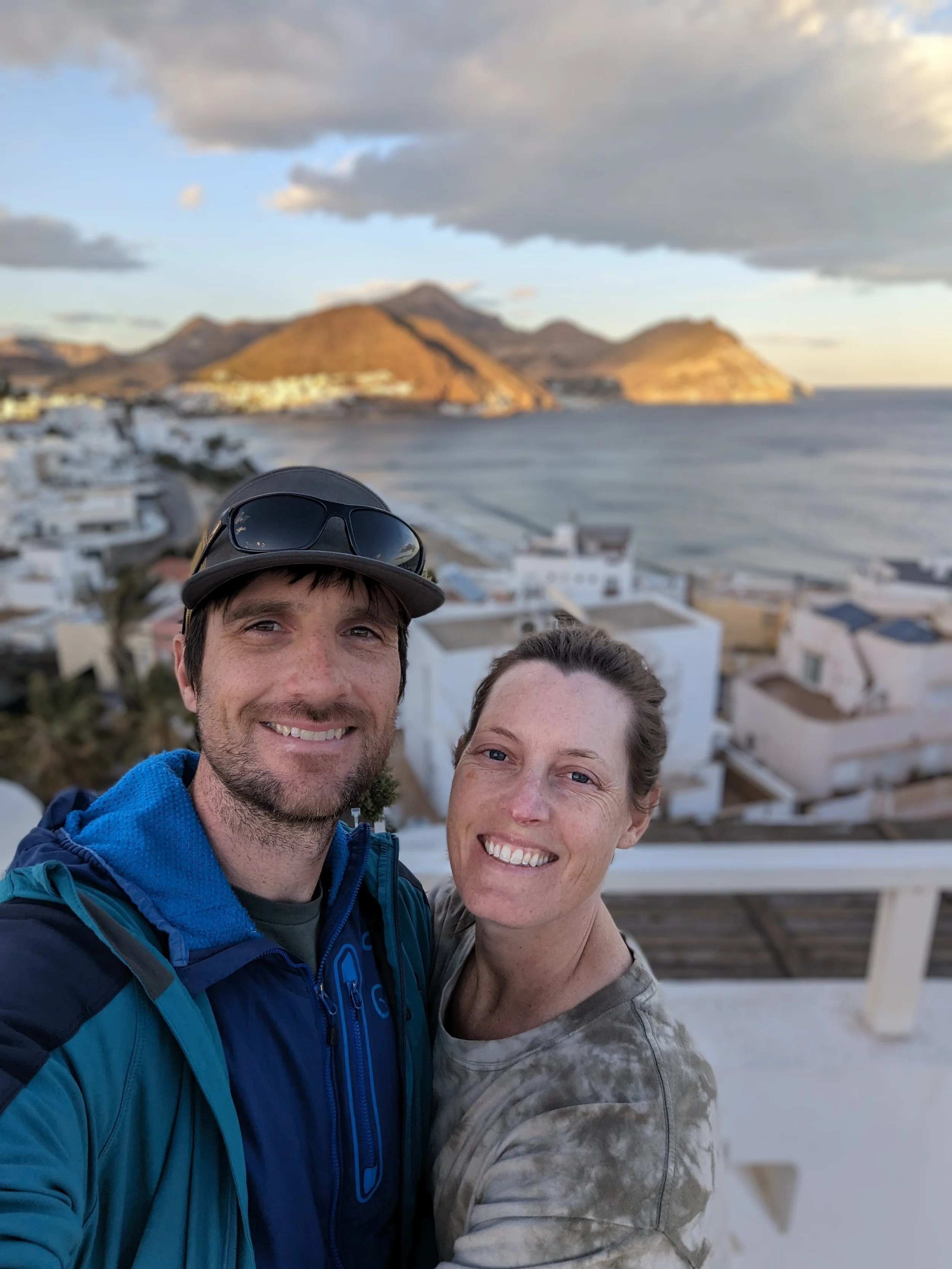Spain 2024 Trip Report
Spain is a country that I have visited many times over the years before and after becoming a climber. Spain was actually the very first country outside of North America (not including my deployment) that I had ever travelled to way back in 2010 when I spent a few days in Barcelona as a vacation after returning from my deployment to Iraq. My next time in Spain was on a road trip through Europe in 2011 while I was still in the Army and stationed in Germany. In 2015, I then had the wonderful opportunity to be a student and then apprentice for the Mountain Training School and spent several months living, climbing, and travelling around the north of Spain. I have even thought to myself that if I ever HAD to move to another country, Spain would be number 1 on that list [maybe it will be my retirement plan]. I was surprised to realize that it had been 8 years since I was last in Spain while apprenticing for the Mountain Training School so I decided that I had to make another trip a reality ASAP.
I have been kicking around the idea of running a climbing retreat to Spain for many years now and 2020 was the year I was going to finally commit and make it happen but…well, let’s just call 2020 the year of lost hopes and dreams. As it took a few years for travel to get back on its feet, I shelved the idea and instead focused on goals in South America over the winter seasons and put Spain on the back burner. With my goals in Valle Cochamó wrapped up, it was time to begin looking at Spain again. I finally pulled the trigger and because I always have to go all-in, I bought a round trip ticket to spend the whole month of February 2024 in Spain. I had never been to the south of Spain for climbing but from all accounts, the Costa del Sol and Costa Blanca are both the premiere European winter vacation hot-spots as well as climbing locations. My friends Sam and Lani had been to El Chorro the previous winter and highly recommended the area so I booked the flights and Airbnb and set off with dreams of tufas and orange-streaked limestone in my head.
It turns out that even though winter is prime time for climbing in southern Spain, it is actually slow season for tourists so I was pleasantly surprised to find travel costs and accommodation to be very reasonable. For example, the round-trip plane tickets were $450 each, I rented a decently sized car for the whole month for roughly $400, and most 2 person accommodations were under $80 per night; can’t beat that! We flew into Malaga which is about a one-hour drive from El Chorro. We stayed at an Airbnb right in front of the main sector of climbing and about a 5-minute walk from the tiny village of El Chorro where the train station is. We couldn’t have asked for a better Airbnb complete with beautiful views of the climbing, a pool deck, and fresh oranges and lemons to pick and squeeze for fresh juice in the mornings. The village of El Chorro exists almost exclusively for the Caminito Del Rey (a famous hiking trail and tourist attraction) so there isn’t much in the village as far as restaurants or supermarkets go. Having a car made it extremely convenient to run to the next bigger village over whenever we needed supplies or wanted to have a meal out and experience some Spanish culture. A car isn’t mandatory and you can easily train from Malaga to El Chorro and do your grocery shopping before arriving. Just remember that almost everything is closed on Sundays so plan accordingly depending on your travel plans.
The Climbing: El Chorro became famous in the 80 and 90s for the wildly exposed climbing that began on a treacherous approach along the Caminito Del Rey. After a series of unfortunate deaths in the early 90s, the climbing on the Caminito was closed and Spain rebuilt the Caminito Del Rey to become a tourist attraction which is now one of the most popular hiking trails in Europe with 100s of visitors each and every day. Unfortunately, the rebuilding of the Caminito permanently closed 100s of world class climbing routes found in the canyon. The Frontales is now the main climbing area which is a 1000-foot-tall ridge of limestone with endless single and multi-pitch options. The El Chorro guidebook is 360 pages long and includes many of the surrounding areas so there is definitely no shortage of climbs to choose from; having a rental car opens up plenty of opportunities. There are spectacular single and multipitch options of essentially all styles and aspects. There are multi pitches of all varieties from 12 pitch (mostly 5.7) 5.9 to 5.13 overhanging test pieces. There are tufas, caves, slabs, and face climbing. The majority of the climbing is in the sun but there are a few sectors in that can be climbed in the shade. While we did have a few days of rain, the weather is typically dry and comfortable in the winter months. Some of the older classics have definitely polished up over the years but there are still plenty of new routes going up; I climbed a new 4 pitch 5.11c named La Sonriso De Eva (next to the mega classic Amptrax) that I thought was one of the best multis I did while there with very nice fresh crisp edges (reminiscent of Lake Mead Buttress!). On several climbing days I could hear a hammer drill working hard off in the distance. Being a limestone crag, there is not much opportunity for crack or trad climbing. One thing to note is that this area tends to be bold for “sport climbing”. Oftentimes, especially on older routes, I would reflect that the climbs would be better described as bolt protected face climbs instead of sport climbs. It squarely helped me put into perspective my recent development around Vegas which I worried could be more closely bolted; nah! Compared to these routes, I put in too many bolts! Ha! Moral of the story is that a “stiffy draw” could be considered mandatory for shorter climbers and those not into being bold. I know I wish I had one on several occasions to help with some scary “no fall” zones.
Other Activities: The Caminito del Rey. Any visit to El Chorro wouldn’t be complete without a hike on the Caminito. The path, which is essentially a hanging sidewalk on the side of a 1000-foot-tall canyon cliff, 300 feet above the river, was first constructed in 1905 ordered by King Alfonso XIII to provide access for the workers building the hydro-electric plant that would supply electricity to Malaga. To my understanding the hydro electric plant was redesigned in the 70s and the Caminito soon fell into disrepair. In the 80s and 90s, as sport climbing became popular in Europe, climbers flocked to the canyon and sprayed bolts everywhere imaginable; the relics of which can still be seen while hiking the Caminito. At one point, the climbing in this canyon was considered one of the most important sport climbing sectors in Europe. After a handful of fatalities in the late 90s, the local government shut down access to the canyon and decided to rebuild the Caminito for the masses to enjoy. Unfortunately, this has basically erased all of the climbing history from this canyon but it now allows access for hikers of all ability levels to enjoy trekking through the Canyon. From a climber’s perspective, the climbing potential in this canyon is mind numbing but you know, I think we have plenty of climbing elsewhere.
Via Ferrata: Via Ferrata (VF) is Italian for “Iron Path” and it is a series of steel cables and rebar set up so that an inexperienced climbers can safely access and move easily through treacherous mountainous terrain with proper safety equipment. It was first used in the Dolomites of Italy during World War 1 to move soldiers strategically through the Alps. After the war the VFs continued to be used in a recreational setting. VFs have become very common installations all throughout the Alps and Europe in general. The idea is starting to catch on in the States and they seem to be popping up anywhere with even a sliver of a tourism economy. As you may or may not know, I have a fairly significant history with VFs; my first guiding job was at Torrent Falls, Kentucky in which I guided on the very first via ferrata built in the United States. A few years later, I also helped construct a 1000-foot-tall Via Ferrata in Idaho Springs, Colorado. So, I was pretty excited to check out my first European Via Ferrata. For the die-hard “badass” rock climber, VFs are probably not the coolest thing in the world but if there are some newer climbers in the group, or you simply want a unique way to stretch your legs, I think you would get a kick out of doing the VF. You must use special via ferrata lanyards to safely complete the VF. My favorite part of this particular VF is the zipline, which is highly recommended that you bring a proper zip pully to use. Honestly, it seems a little sketch as this thing is a backyard build and there is only one cable with no backups, but I think that’s half the fun. There is no way something like this would ever be allowed in the US. There are also 2 cable bridges that help keep the excitement level up. We were able to complete the course house to house in about 2.5 hours so it was a fun way to stretch the legs a little late one afternoon.
Culture: You are in Spain! When I lived in Germany in the Army, I was always a little saddened to visit a German city and know that almost none of the architecture remaining was original. As Spain largely avoided involvement in WW2, because they were struggling with their own civil war, there is a ton of historic and original buildings, castles, architecture, and heritage sites; some estimated to be up to 5,000 years old. Some highlights included visiting the Alhambra which is a 800-year-old castle overlooking the city of Granada. The Alhambra is a UNESCO World Heritage site and one of the most visited attractions in Europe and it is best to book your visit at least a month in advance if not more. You can still find access passes about a week out but they will cost you 4-5 times as much. I think I was probably most impressed by the Dolmens in Antequera which is also a UNESCO World Heritage site that is estimated to be over 5000 years old. The Dolmens can be thought of as an underground Stonehenge. To try and comprehend how they moved these massive slabs of rock 5000 years ago is unfathomable. Luckly there is an informational video you can watch to see their theory of how it was made. Even with an explanation, I would like to see someone try to replicate a feat like this.
We took every opportunity we could to visit neighboring villages and try the local cuisine which consists of a lot of pork, cheese, bread, olive oil, and seafood. I must admit that after a month we had our fill of traditional Spanish food but I will say that the cured sheep cheese (oveja curado) is to die for and I am super stoked to have a sealed chunk in my checked luggage.
We spent the last week of our trip driving up Costa Blanca and enjoying vacation beach life. Accommodations were plentiful and cheap. There are plenty quiet, tiny, off the beaten path beaches but also huge Miami-like cities. Whatever floats your boat.
If I were to do it all over again, or make recommendations for a climber wanting to take a winter vacation to Spain, I would offer this advice: First off, a week will probably leave you wanting more time (just like any vacation though right?). I totally get that for the average American it is hard to get more than a week off from work; but I think if you could pull off a Friday night through following Sunday, it would be worth it especially if you are in it for the history and culture and not just the climbing. If all you care about is the climbing, 2-4 weeks is a must. For the die-hard climber, I think spending 1-2 weeks in 2-3 different zones would be the best of all worlds and keep things fresh: Fly into Malaga and rent a car. Start your trip in El Chorro and surrounding areas, then check out the greater Alicante climbing areas like Sella and Calp, then finish your trip out in Chulilla. Finally fly out of Alicante/Valencia/Barcelona. That would be one dreamy trip…
Here's a brief run down on most of the places we visited…
El Chorro: El Chorro proper is less of a town and more of a train stop, or something in between. It was a town created by the workers who lived in the area while building the hydroelectric plant, and today is inhabited mostly by a few locals, employees of the La Garganta Hotel and Restaurant, and climbers. Bus loads of people arrive daily to hike the famous Caminito Del Rey trail which is a suspended walkway up to 100 meters high in a narrow gorge. With that said, El Chorro does have a few amenities that are super handy to have within walking distance, like a “supermarket” sparsely stocked with a few necessities, a restaurant that serves food from 8am to 11pm, and a few stands and bars that pop up to serve the busloads of hikers from the Caminito.
Our AirBnb was situated right in El Chorro, about a 5 minute walk from the train station, and in my opinion was the most ideal location to stay. Despite being only 5 minutes from all of the buses, tourists, and trains, the bnb itself was super quiet and felt as remote as you could be. The place was uniquely old and new all the same time and had plentiful supply of household items to feel like we were at home for three weeks, including a washing machine, two different types of coffee makers, and a staple in every Spanish household, a manual citrus juicer.
The views from our pool deck overlooking the reservoir and cliffs contributed to the overall appeal of the location. Since we had a car on our trip, we were able to scope out the locations of other bnbs and accommodations (like the Olive Branch climbers hostel and Rocabella bnbs) and were absolutely pleased at the end of the day with the “central” location of our Airbnb versus the more remote locations of the previously mentioned spots to stay.
Antequera: is a medium sized village (45k residents) with a very impressive castle overlooking the town that is a must visit for the nominal fee of 4 euros. Stroll through the streets below the castle, check out the bull fighting ring, and visit the ancient Dolmen (burial) monolith sites for free just outside of the center of town. We ate at a few restaurants in Antequera and the one that stood out to me as a favorite was El Jardin, a sweet eclectic café near the center square that felt like a refreshing change from the typical Spanish fare. We also had one of our more fancy dinners at Casa Carlos and if you go there, I’d highly recommend the cheese and meat board. Be sure to watch as Carlos himself carves the ham from the leg of the pig nearby your table. Driving through Antequera is not for the faint of heart, especially in the upper part of town nearest the castle, as the streets are very narrow and steep. Antequera has every large supermarket you might want to visit on your trip, my favorite being Dia, because they’re not too big and not too small, but you also have Carrefour, Aldi, Mercadona, and more in this town. You’ve got options.
Side trip: Torcal de Antequera is a geological park about 20 minutes from Antequera known for its unique rock formations. A cool place to visit and hike around on a rest day (although I recommend you go hiking there on a dry rest day because we went on a rainy day and a significant portion of the trails were very slippery and muddy). Hike the Orange or Yellow loops, grab a coffee at the visitor’s center, and then go find the tornillo rock formation and ammonites (snail fossils) nearby.
Ardales: is a very small village (about 3k residents) about 30 minutes from El Chorro to the west. We visited one night when we wanted to explore but didn’t have more than a few hours, and Ardales really fit that bill. We drove to the center square and walked uphill from there through, once again, narrow steep streets to the castle on the hill. Take a peek over on the other side of the castle to see and hear the happenings in the valley to the west. We ate a meal in the center square which I wouldn’t necessarily recommend for the food, but would recommend for the experience.
Alora: is the closest town to El Chorro (with the least winding approach) and is a small-medium sized village. The closest pharmacy is in a small village just before Alora; check google for accurate hours of operation. Alora is steep and charming with a castle on the hill but this is the town we explored the least. We passed through it anytime we drove to Malaga and I guess felt like that was enough to get a feel for it. I will say that I ran an errand into Alora around 11:30am on a Thursday and the main square was bustling with locals having their breakfast.
Granada: is one the 4 largest cities in Andalusia. The main “attraction” in Granada is the Alhambra which is somewhat confusing but contains a few different areas within the entire property. Reservations to visit the Alhambra book up so I’d recommend scheduling in advance if you plan to go. The Nasrid Palace and the Generalife Gardens were my favorite. It’s recommended you spend about 3-4 hours at the Alhambra and that is accurate, it’s a huge place (on top of a hill, go figure). The Granada City Pass was crucial for us in being able to visit the Alhambra somewhat last minute (still booked a week in advance) and also gave us access to other monuments, attractions, and bus rides throughout the city. We didn’t stay here long and frankly, were happy to go back to peaceful El Chorro after a day and night in Granada. It is a very lovely place known for being a meeting place for artists. There were a lot of people playing guitar in the streets, which we didn’t see in any of the other cities and towns that we visited.
About an hour+ west of El Chorro…
The mountains to the west of El Chorro contained some of the most beautiful and unique towns that we saw on the entire trip. If you have time, I highly recommend a day or multi-day trip to visit some of these places. I’m sure the other villages and towns in these mountains were just as awesome, but I’ve just listed the ones we visited. Sentinel de las Bodegas 10/10 must visit (homes, restaurants and shops built into the caves of a wide canyon), Zahara de la Sierra (great views of the reservoir, awesome castle), Grazalema (small alpine feeling village nestled in the mountains), Ronda 10/10 must visit (old city and nueva puenta bridge on the side of a cliff with lush valleys surrounding the village)
The Coast…
Costa Del Sol - Benalmádena: we stayed here just before flying out of Malaga and really liked the feel of this beach town. Although it was quite developed, it wasn’t “overly” developed for our taste, which buildings not exceeding 4 stories and nice restaurants along the shoreline.
San José: was just the sweetest little beach town nestled within a larger natural park area and near the Cabo la Gata. I would highly recommend visiting here if you find yourself passing by. We were given a recommendation from our bike tour guide in Granada to visit Cabo la Gata and Las Negras (which we skipped in lieu of San Jose) and we’re very glad for the expert tip from her.
Costa Blanca - Calp: is known for the impressive Pinon rock that juts straight out of the Mediterranean Sea, we just had to see it. We stayed here one night, and although Calp was pretty nice and the Airbnb, we stayed in had two balconies (one looking at the sea and one at the mountains), we were slightly disappointed by how developed it is. We didn’t spend much time here, though, and if we had, would have ventured into the mountains nearby for some supposed worldclass limestone sport climbing off the Costa Blanca.
Thanks for reading the trip report! I now offer climbing and cultural trips to Spain. I will post dates for retreats in the newsletter but I am always available for a custom trip if that suits your needs better. Ideal Spain season is November through April and as always feel free to reach out directly to me with any questions.

